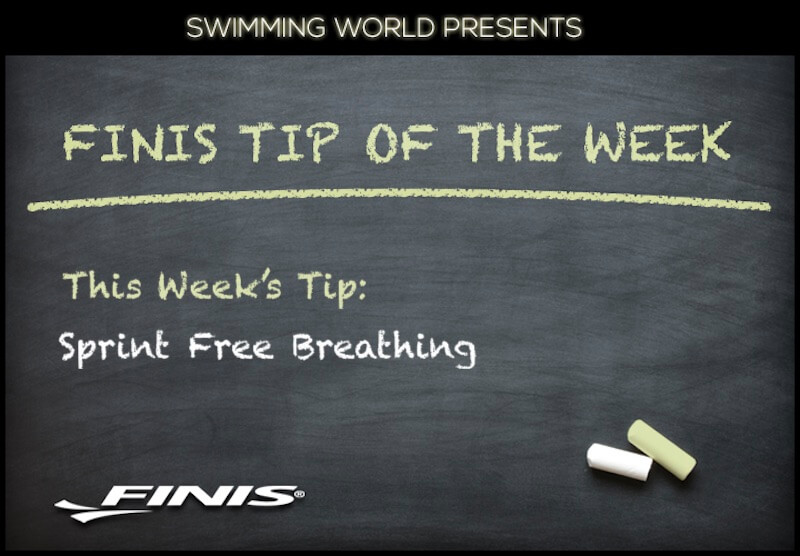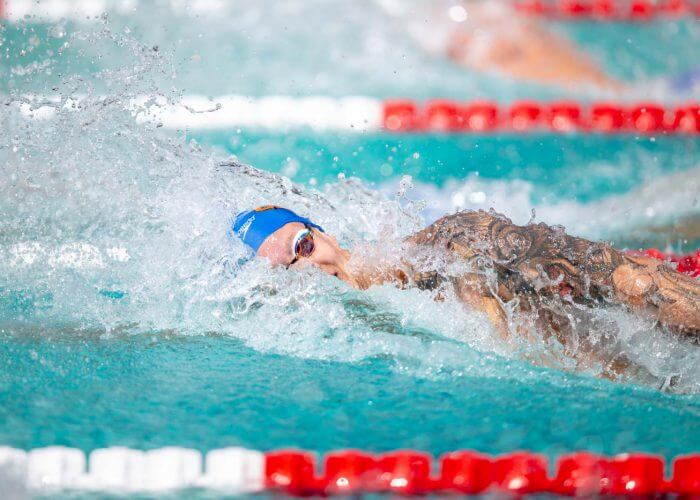FINIS Tip Of The Week: Sprint Free Breathing

Welcome to the “FINIS Tip of the Week.” Swimming World will be bringing you a topic that we’ll explore with drills and concepts for you to implement with your team on a regular basis. While certain weeks may be more appropriate for specific levels of swimming (club, high school, college, or masters), each tip is meant to be flexible for your needs and inclusive for all levels of swimming.
The tip for this week focuses on how to breathe when you are sprinting freestyle. As any sprinter knows, the shorter the race the more precise you need to be with every movement in the water. The timing and frequency of your breath is a key part of your success in sprinting, so take a look at the tips below that can help you refine this essential skill!
Quick Breath!
While this seems like a no-brainer, it is common to see sprinters disrupt their tempo with a too-slow breath. In order to breath “quickly,” swimmer should have the head back in line with the rest of their body by the time their han hits the water at the front of their stroke. And in order to do this, you need to follow our next tip which is to:
Breathe Early!
When you look at when most people initiate their breath, you will see that many swimmers make the mistake of breathing too late in their stroke. That means their head is still turned or getting back into line while the breathing side arm has already entered the water.
A late breath can affect negatively affect both your rotation and the efficiency of your catch, ultimately throwing off your body position and slowing you down. To avoid this, work on starting your breath as soon as your breathing side arm has exited the water, and by remembering this last tip.

Photo Courtesy: Becca Wyant
Head Moves Independent of the Body!
Watch the best sprinters take their breath (Nathan Adrian comes to mind), and if you look closely you’ll notice that their head is moving totally separate of their body rotation. While this may seem counterintuitive (isn’t it easier to move my head with my body?), in reality moving your head independent of you body’s rotation will allow you to ensure your breath is not interfering with your tempo and will also help minimize any resistance that comes from turning your head out of line with your body.
Keeping your breath separate from your body’s rotation will make you more aware of how quick your breath while also giving you better control over the timing. Happy sprinting!
All swimming and dryland training and instruction should be performed under the supervision of a qualified coach or instructor, and in circumstances that ensure the safety of participants.



